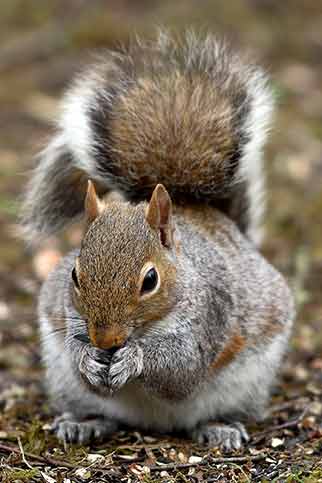The arrival of grey squirrels in the New Forest

can not live side-by-side
Grey squirrels are relative newcomers to the New Forest, for until the 1940s, the red squirrel was the New Forest squirrel. By then, though, the red squirrel's days were numbered, for the grey squirrel was soon to dominate.
Natives of the eastern United States, grey squirrels were progressively introduced to Britain from 1876, or possibly earlier, by people who now would be viewed, at best, as misguided wildlife enthusiasts.
The largest scale grey squirrel releases were fairly widely scattered throughout Britain, and occurred during the first 20 years of the 20th century. The closest release to the New Forest was of six grey squirrels set free in Bournemouth in around 1920.
Retired New Forest keeper Gilbert Smith recalled the first grey squirrel he saw: it was in 1941, and he noted ‘we had orders to shoot every grey squirrel on sight.’
The native red squirrel hung on tenaciously in the New Forest into the later 1940s before possibly succumbing to disease transmitted by the grey squirrels, or failing to successfully compete with the newcomers - surprisingly, despite numerous studies, no one knows for certain why red squirrels disappear soon after the introduction of grey squirrels.
Now, the New Forest’s nearest red squirrels are to be found on the Isle of Wight, and in Poole Harbour on Brownsea and Furzey Islands, protected by water from invasion by mainland grey squirrels.
Find out more about New Forest squirrels
References:
The History of British Mammals: Derek Yalden
Gilbert Smith, New Forest Recollections
More links
Other related links
Search this site

Sadly, 58 animals were killed - 35 ponies, 13 cows, 8 donkeys and 2 sheep, whilst a further 32 were injured - 3 pigs, 9 donkeys, 11 cows and 9 ponies.
(Forty-three accidents occurred in daylight, 15 at twilight and 101 in the dark. Twenty-seven accidents were not reported by the driver involved).
Here's just one horrific example - Three donkeys killed in collision with van at notorious New Forest blackspot (Advertiser and Times)

